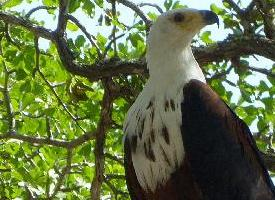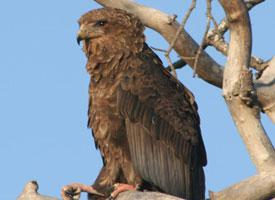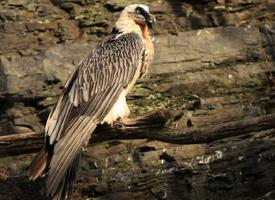
Váhy a míry
| Délka | od 63 do 75 cm |
|---|---|
| Hmotnost | od 2 do 3,6 kg |
| Délka rozpětí křídel | od 2 do 2,4 m |
Stav ohrožení
| Ohrožen |
Popis zvířete
The African fish eagle (Haliaeetus vocifer), a species belonging to the Accipitridae family, is a majestic bird of prey that is widely recognized and revered across the continent of Africa. With its striking appearance and distinctive call, it has become a symbol of the wild African waterscapes where it thrives.Adult African fish eagles boast a dramatic plumage contrast; their bodies are mostly covered in a rich, chocolate brown, while the head, neck, and tail are a brilliant, snowy white. This coloration provides excellent camouflage when the eagle perches in trees beside water bodies. The large, hooked beak is a powerful yellow, tipped with a sharp black point, an adaptation perfectly suited for gripping and tearing apart their aquatic prey. Their eyes are a piercing dark brown, exuding a sense of keen awareness and intelligence. The legs and powerful talons are also a bright yellow, designed to snatch fish from the water with remarkable precision.
With a wingspan ranging from 2 to 2.4 meters (6.6 to 7.9 feet), the African fish eagle is a formidable avian predator. Despite its name, its diet is not restricted to fish alone; it is an opportunistic feeder that will also take birds, like waterfowl and even small mammals or carrion, when the opportunity arises. Its primary hunting technique is to perch in a favorable position above the water, before swooping down with incredible speed to snatch its prey with a splash.
One of the most iconic aspects of the African fish eagle is its evocative call, often described as a haunting or plaintive sound, which carries far over the waters. This call, which sounds like "weee-ah hyo-hyo-hyo" or "a strong 'kleek-kik-kik-kik'," is frequently used to establish territory and communicate with its mate. The call is so distinctive that it is sometimes referred to as "the voice of Africa."
African fish eagles are generally monogamous and are known to form long-lasting pair bonds. Their nests are large structures made of sticks and other vegetation, built high in trees or on cliff faces overlooking water. Both the male and female take part in constructing the nest, which is used and added to over several breeding seasons.
These birds are usually found near freshwater lakes, rivers, lagoons, and coastal estuaries. Their distribution extends across sub-Saharan Africa, from the Eastern Cape in South Africa to the Nile basin and parts of Western Africa. Due to their dependence on water bodies rich in food supply, African fish eagles are considered excellent indicators of ecological health in their habitats.
Conservation status of the African fish eagle is currently listed as Least Concern by the International Union for Conservation of Nature (IUCN), mainly due to its wide distribution and relatively stable population. However, like many species, they are vulnerable to environmental changes such as pollution, habitat destruction, and overfishing, which can impact their food sources and nesting sites.
In conclusion, the African fish eagle is not only a symbol of the African wilderness but also a vital part of the ecosystem, playing an important role as a top predator. Its presence is a reminder of the need to preserve the natural habitats that sustain it and the rich biodiversity of the African continent.
Podobná zvířata
Nové fotografie zvířat
Top 10 zvířat
- Chinese water dragon (Physignathus cocincinus)
- Galápagos tortoise (Geochelone nigra complex)
- Dolphin gull (Leucophaeus scoresbii)
- Japanese macaque (Macaca fuscata)
- Colombian red howler (Alouatta seniculus)
- Sea urchins (Echinoidea)
- Moustached guenon (Cercopithecus cephus)
- Diana monkey (Cercopithecus diana)
- Common reed warbler (Acrocephalus scirpaceus)
- Common house mosquito (Culex pipiens)


